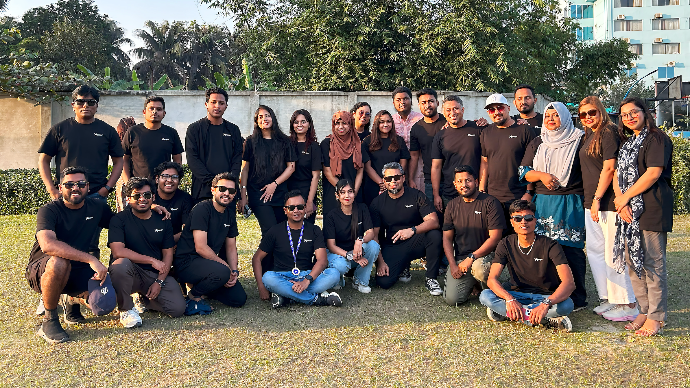
Startups don’t need the services of public relations agencies – at least, that’s what most startup Founders or business leaders would like to believe. But let’s review that theory, shall we?
Imagine if an employee or an executive representing your company committed a blunder. Picture this: a mishap equivalent to a botched spell or a misplaced Portkey causing havoc. Now, what if a customer complaint, fueled by a touch of dark magic, went a bit too far and quickly became a viral sensation online, casting a dark cloud of negativity on your brand?
Imagine the repercussions of such a situation, as if there is a secret dark wizard employed in your company. And what if, despite investing significant time and resources in marketing your products and services, the public remains oblivious to your brand, almost as if they were all under the influence of the memory charm, Obliviate? Clearly, in that situation, all you need is a simple Beautification Charm.
But, since we don’t have that in the real world, how about trying the next best thing and getting yourself a reliable PR agency to act as your Patronus and keep all those Dementors, aka negative public perception, at bay?
The importance of public relations in crisis management
Ok – maybe that was too Harry Potter. Let’s study a real-life example. Startup Y is a Malaysian tech company that recently launched a groundbreaking e-commerce platform, aiming to revolutionise online shopping in the country.
The platform has gained popularity among users, receiving positive reviews and attracting significant media attention. However, as the user base expands rapidly, Startup Y encounters a PR crisis when a major data breach occurs, compromising the personal information of thousands of users.
Also Read: Barbie-fy your business with the power of PR
News of the data breach quickly spreads across social media platforms, causing panic and eroding trust among users. Negative comments, online articles, and viral videos criticising the startup’s security measures start circulating, damaging Startup Y’s reputation and impeding further user acquisition. The internal team at Startup Y, overwhelmed by the crisis, struggles to respond effectively, exacerbating the situation.
Recognising the urgency and severity of the issue, Startup Y realises the need for professional assistance and decides to engage a reliable PR agency with expertise in crisis management and come with amazing media relations, specifically in the Malaysian market. Fortunately, the PR agency quickly takes charge and develops a tailored communication plan to address the issue and rebuild trust with the affected users.
You see, being a Founder of my own company, I know for a fact that sometimes leaders tend to think that they know everything that is best for their business. Sometimes they feel like they can do everything themselves, so why would they need to involve outsiders in their operations? Why try to fix something that is not yet broken, right?
Why startups need to invest in PR agencies
Sirius-ly, you may need to think of it this way – you’re just preparing the umbrella before it rains, and this umbrella of yours is not a normal umbrella that just protects you from getting wet. It also actively does its best to make sure that you have sunscreen on and always look your best whenever you step outside. You may not think you need that umbrella because it’s not raining yet, but believe me, you’re going to wish you had that umbrella ready at arm’s reach.
Hiring a PR agency to take care of the image aspect of your business is especially crucial for startup companies.
While the founder Focuses on the business aspect of it, the little elves of the PR agency can work simultaneously to increase the visibility of your company, manage any crises that may arise, increase the rate of positive perception towards your brand and handle the creative aspects that will aid in maintaining a good reputation among the public, which to be honest, are your potential customers.
Also Read: The growth of business messaging: How it’s improving business performance in Southeast Asia
Proactive PR consultants will make sure that you are seen by the right people (like VCs) at the right time.
Needless to say, having a PR agency to handle the image and publicity side of your business is a convenience that not many leaders leverage. Everyone knows that the company’s image can make or break a business – so what’s the harm in ensuring that you’ve got yourself covered if anything goes wrong?
For companies that have been around for quite some time, having a PR agency to back them up can also mean increased credibility of the brand. The PR consultants will be able to advise you on certain aspects of the business that you should emphasise based on their knowledge within the media industry. This also applies to startup companies too. It can show potential investors that your company truly is worth the money.
Aside from that, the people at the PR agency can even help you get in touch with the right people at the right time. Looking for an award? Let the PR people know what kind so they can put out their feelers out there. Need help to get people to come to your company’s event? Let the PR people know so they can get in touch with their vast network of media contacts to make that happen!
Ultimately, a PR agency can help you with your business in so many ways that you may not even realise, especially for startup companies. It’s hard to list down all the benefits of hiring a PR agency as most of them have their own specialities and areas that they tend to focus on. But I have managed to pique your interest, pick up the phone and try giving a few PR agencies a call to discover which one is right for you.
“The wand chooses the wizard, Harry,” said Garrick Ollivander from the wizarding world. But in this case, you choose your wand and just watch the magic happen.
And to answer the earlier question, yes, startups do need a reliable PR team to back them up!
—
Editor’s note: e27 aims to foster thought leadership by publishing views from the community. Share your opinion by submitting an article, video, podcast, or infographic
Join our e27 Telegram group, FB community, or like the e27 Facebook page
Image credit: 123rf-gesrey
This article was first published on August 2, 2023
The post Startups don’t need PR agencies, sirius-ly? appeared first on e27.








